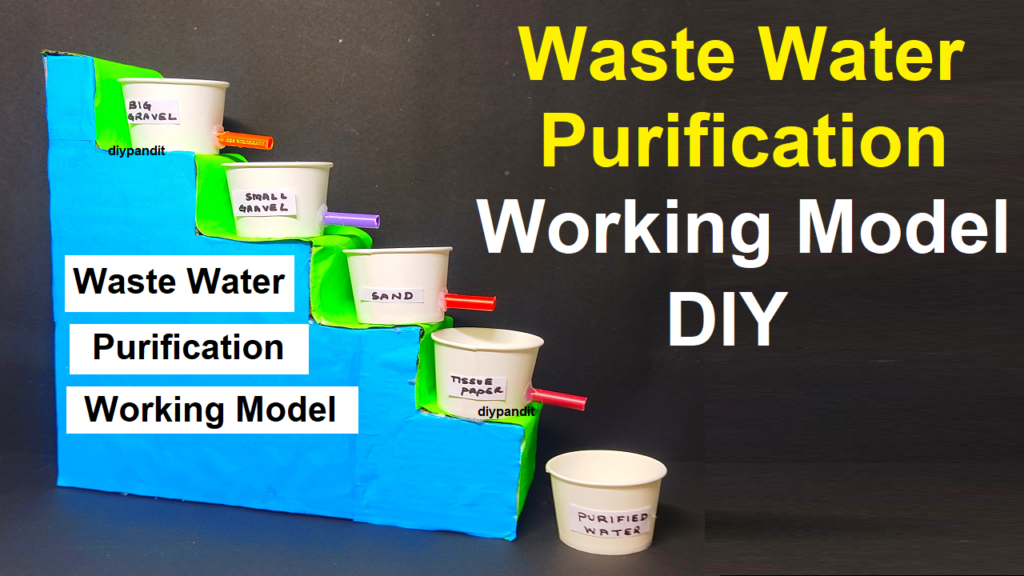Introduction:
Clean, accessible water is an essential resource for sustaining life, yet in many parts of the world, water pollution remains a critical issue.
Contaminated water sources pose significant health risks to communities and ecosystems alike.
Understanding the principles of wastewater purification is not only crucial for environmental preservation but also for safeguarding public health.
The Waste Water Purification Working Model project aims to elucidate the process of natural filtration in a simple yet effective manner.
Utilizing everyday materials such as paper cups, soil, gravels, and tissue paper, this model serves as a dynamic educational tool for comprehending the basic principles of water purification.
Creating a waste water purification working model using paper cups in a staircase steps format with soil, gravels, and tissue paper is an excellent way to understand the process of natural filtration. Follow these steps to create your model:

Materials Needed:
- Paper cups (varying sizes)
- Soil (clean, free of contaminants)
- Gravel or small pebbles
- Tissue paper or fine mesh fabric
- Dirty water (representing wastewater)
- Container to collect purified water
Steps:
- Arrange the Cups:
- Arrange the paper cups in a staircase format, with each cup slightly overlapping the one below it. This creates a cascading effect.
- Prepare the First Cup (Topmost):
- This cup represents the initial step of filtration.
- Add a layer of tissue paper at the bottom of the cup. This will act as a fine filter to trap smaller particles.
- Add Soil Layer:
- Fill the cup about one-third full with clean soil. Ensure that the soil is free of contaminants and chemicals.
- Add Gravel Layer:
- On top of the soil, add a layer of gravel or small pebbles. This will serve as a coarse filter to trap larger debris.
- Repeat the Process:
- Repeat steps 2 to 4 for each cup in the staircase format, with each cup acting as a successive filtration step.
- Set up the Collection Container:
- At the bottom of the staircase, place a container to collect the purified water.
- Pour in the Dirty Water:
- Gently pour the dirty water into the topmost cup. Observe how the filtration process begins.
- Observe and Analyze:
- Watch as the water cascades down through the cups. Notice how each layer of soil and gravel contributes to the purification process.
- Collect Purified Water:
- At the end of the cascade, you should have noticeably clearer water collected in the container. This represents the purified water.
- Inspect the Filter Media:
- After the filtration process, examine the tissue paper, soil, and gravel layers. Observe the particles trapped in each layer.
- Record Observations:
- Take notes on the effectiveness of each layer and any changes in the water quality.
This working model effectively demonstrates the natural filtration process, showcasing how different filter media work together to purify water. It’s a great way to learn about basic water treatment methods and the importance of clean water resources. Remember, this model is for educational purposes and not suitable for actual wastewater treatment.

